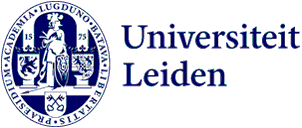2,414 search results for “ f mri research” in the Public website
-
New Methods for (f)MRI Analysis
Analysis of neuroimaging data requires multiple steps where statistics play a crucial role. The MRI methods research group develops new statistical methods that are accurate, transparent and easy to use.
-
Got a friend in me?
Mapping the neural mechanisms underlying social motivations of adolescents and adults
-
 F Jansen
F JansenFaculteit Geneeskunde
f.w.jansen@lumc.nl | +31 71 526 2871
-
 F Engbers
F EngbersFaculteit Geneeskunde
fengbers@anst.azl.nl | +31 71 526 2301
-
 F Boer
F BoerFaculteit Geneeskunde
fboer@anst.azl.nl | +31 71 526 2301
-
ENIGMA-Anxiety Working Group
Together with researchers from over the world, the ENIGMA-Anxiety Working Group endeavors to unravel the neurobiology of anxiety disorders and related constructs.
-
Andrew Webb wins Huibregtsen Prize for portable MRI scanner
Professor of Radiology Andrew Webb and his collaborative partner Johnes Obungoloch from Uganda have won the 2023 Huibregtsen Prize.
-
50 jaar MRI: Hoe het LUMC dit betaalbaar maakt
50 years ago Lauterbur published the basic principle of MRI. Sine then MRI has become more expensive. Professor Andrew Webb describes what is needed to make MRI available for everybody.
-
Mechanism MRI amplifying agents explored
Special amplifying agents can make MRI scanners and NMR techniques hundreds of times more sensitive. Leiden physicists have now found a method to test their efficiency. More sensitive MRI scans could for example improve our understanding of cystic fibrosis or Parkinson’s disease. Publication in PCCP…
-
 Lisa Schreuders
Lisa SchreudersFaculteit der Sociale Wetenschappen
e.schreuders@fsw.leidenuniv.nl | +31 71 527 2727
-
Towards a Cognitive Neuroscience of Prosody Perception and its Modulation by Alexithymia
This dissertation examines what network in the human brain is involved in the perception of prosody and whether activity within this network is modulated by the personality trait alexithymia.
-
Anne Hafkemeijer
Faculteit der Sociale Wetenschappen
a.hafkemeijer@fsw.leidenuniv.nl | +31 71 527 1375
-
Towards nano-MRI
By detecting the tiny forces between a micrometer sized magnet and the spins of hydrogen nuclei, we can do MRI with a volume resolution that is approximately 12 orders of magnitude better than a conventional MRI.
-
Where does the quantum world end?
With his ice-cold nano force sensor, Tjerk Oosterkamp searches for the boundary between the quantum world and the everyday world. The Leiden physicist has received an NWO subsidy of 600,000 euros.
-
Neural correlates of vocal learning in songbirds and humans: cross-species fMRI studies into individual differences
Vocal learning is a trait shared by songbirds and humans. It is also a trait that is restricted by the brain rather than by a species' vocal apparatus. In this dissertation, functional MRI is employed in both species in order to explore potential common neural mechanisms underlying the ability to develop…
-
Microcoil MRI of Plants and Algae at Ultra-High Field: An exploration of metabolic imaging
This thesis investigates the relations between metabolism and anatomy through the use of Magnetic Resonance Imaging (MRI).
-
Catecholaminergic Neuromodulation Shapes Intrinsic MRI Functional Connectivity in the Human Brain
The factors that dynamically sculpt the inter-regional correlation of brain patterns are poorly understood. Here, we test the hypothesis that they are shaped by the catecholaminergic neuromodulators norepinephrine and dopamine.
-
Novel detection method for iron in Alzheimer’s brain
For many years, scientists have observed a correlation between Alzheimer’s disease and a surplus of iron in the brain. However, a causal link between the two has not been proven yet. We lack knowledge concerning the specific form of iron that is involved in the development of neurodegenerative diseases.…
-
L.A.D. F. Kaiser
The Leids Astronomisch Dispuut F. Kaiser is an association dedicated to the students who study astronomy in Leiden. In addition, they are also very involved in the public activities in the Old Observatory and help with the development and implementation of other projects in the building.
-
Typical representations of GL_n(F)
Promotores: Bas Edixhoven, Guy Henniart
-
MRI Machine at the Nanoscale Breaks World Records
A new NMR microscope gives researchers an improved instrument to study fundamental physical processes. It also offers new possibilities for medical science, for example to better study proteins in Alzheimer patients’ brains. Publication in Physical Review Applied.
-
G.F. Stout and the Psychological Origins of Analytic
The philosopher and psychologist G.F. Stout was the teacher of Moore and Russell around 1894. This book shows that Stout's ideas have played a role in Moore and Russell's development from their early idealism towards analytic realism, where Stout's ideas often find their origin in early phenomenolog…
-
Right brain hemisphere also important for learning a new language
Novel language learning activates different neural processes than was previously thought. A Leiden research team has discovered parallel but separate contributions from the hippocampus and Broca's area, the learning centre in the left hemisphere. The right hemisphere of the brain also seems to play…
-
Updated MRI scanner ready for use
The updated MRI scanner at the Leiden Institute for Brain and Cognition (LIBC) will become operational on 29 September. The new version is faster and better than the current model.
-
New output from OSCL event: MRI data sharing guide
In October 2019, OSCL organised a Hackathon on the ins and outs of MRI datasharing
-
artificiële intelligentie bij vroege opsporing gewrichtsontstekingen op MRI?
Kan artificiële intelligentie (AI) helpen om subtiele veranderingen in de gewrichten op te merken op MRI-beelden van patiënten met reumatoïde artritis? Die vraag gaan Leidse wetenschappers beantwoorden dankzij een subsidie van de Nederlandse Organisatie voor Wetenschappelijk Onderzoek (NWO).
-
 Nelleke Verhave
Nelleke VerhaveScience
p.s.verhave@science.leidenuniv.nl | +31 71 526 9671
-
 Hemmo Smit
Hemmo SmitFaculteit der Sociale Wetenschappen
hsmit@fsw.leidenuniv.nl | +31 71 527 3766
-
Artificial intelligence project to accelerate MRI scans receives 2 million euros
Leiden University Medical Center (LUMC), Leiden University and Philips are jointly receiving over 2 million euros from NWO to set up an artificial intelligence (AI) lab. The aim of this lab is to accelerate and improve MRI scans with AI. This is great for patients, and it helps make MRI more accessi…
-
 Marieke Bos
Marieke BosFaculteit der Sociale Wetenschappen
m.g.n.bos@fsw.leidenuniv.nl | +31 71 527 6624
-
 Maaike Wensveen
Maaike WensveenFaculteit Rechtsgeleerdheid
m.wensveen@law.leidenuniv.nl | +31 71 527 8541
-
 Lude Rozema
Lude RozemaFaculteit der Sociale Wetenschappen
l.j.rozema@fsw.leidenuniv.nl | +31 71 527 2727
-
 Frans de Ruiter
Frans de RuiterFaculty of Humanities
f.c.de.ruiter@umail.leidenuniv.nl | +31 71 527 1480
-
 Hannah Bliersbach
Hannah BliersbachFaculteit Rechtsgeleerdheid
h.bliersbach@fgga.leidenuniv.nl | +31 70 800 9500
-
 Arjen de Vetten
Arjen de VettenICLON
a.j.de.vetten@iclon.leidenuniv.nl | +31 71 527 1771
-
Half a million euros to develop better and cheaper MRI scanners
Professor Andrew Webb has been appointed Simon Stevin Master 2017 by the Netherlands Organisation for Scientific Research, an award that carries a prize of 500,000 euros. Webb, who is Professor of MRI Physics at Leiden University Medical Center (LUMC), will use this funding to focus on developing new…
-
 Jennifer Doekhie
Jennifer DoekhieFaculteit Rechtsgeleerdheid
j.v.o.r.doekhie@law.leidenuniv.nl | +31 71 527 5301
-
LIBC Research Facilities
Research facilities within reach of LIBC members:
-
LUMC, Leiden University and Philips intensify collaboration for faster MRI with the aid of artificial intelligence
Together, Leiden University Medical Center (LUMC), Leiden University and Philips are one of the 17 AI labs within the ROBUST consortium that will receive support from the Dutch Research Council (NWO). The aim of this collaboration is to use artificial intelligence to speed up MRI scans.
-
Funding for development for development of faster MRI scans with AI
Een samenwerking tussen het Leids Universitair Medische Centrum (LUMC), de Universiteit Leiden en Philips ontvangt financiering van wetenschapsfinancier NWO om MRI-scans te versnellen. Deze drie partijen vormen samen een van de 17 AI-labs die onder de naam ROBUST voor een periode van 10 jaar NWO-steun…
-
 Harold Nefs
Harold NefsFaculteit der Sociale Wetenschappen
h.t.nefs@fsw.leidenuniv.nl | +31 71 527 3992
-
Ralph Rippe
Faculteit der Sociale Wetenschappen
rrippe@fsw.leidenuniv.nl | +31 71 527 3889
-
 Ben Smit
Ben SmitICLON
smit@iclon.leidenuniv.nl | +31 71 527 3498
-
 Terry Mostert
Terry MostertFaculteit der Sociale Wetenschappen
t.m.m.mostert@fsw.leidenuniv.nl | +31 71 527 2727
-
 Nina Krupljanin
Nina KrupljaninFaculteit der Sociale Wetenschappen
n.krupljanin@fsw.leidenuniv.nl | +31 71 527 2727
-
 Sarah Plukaard
Sarah PlukaardFaculteit der Sociale Wetenschappen
s.c.plukaard@fsw.leidenuniv.nl | +31 71 527 7937
-
 Tamara Platteel
Tamara PlatteelICLON
tplatteel@iclon.leidenuniv.nl | +31 71 527 6498
-
 Marcel Cobussen
Marcel CobussenFaculty of Humanities
ma.cobussen@hum.leidenuniv.nl | +31 71 527 5041
-
Research
Research of the Methodology & Statstics unit of the Institute of Psychology at Leiden University.
-
 Lara Wierenga
Lara WierengaFaculteit der Sociale Wetenschappen
l.m.wierenga@fsw.leidenuniv.nl | +31 71 527 3787
